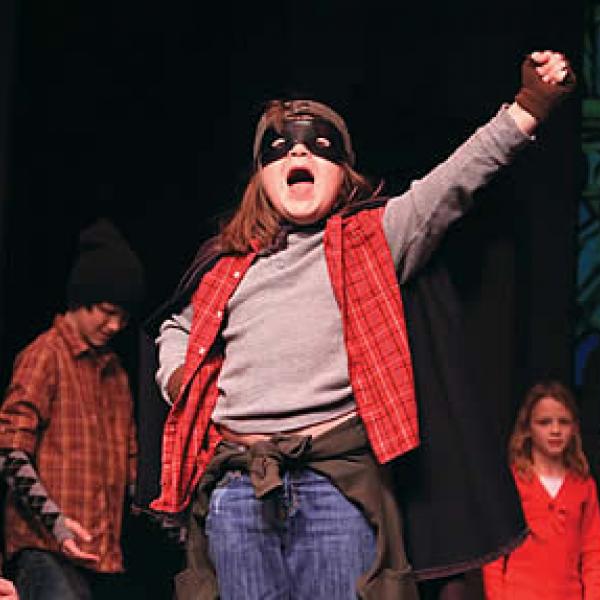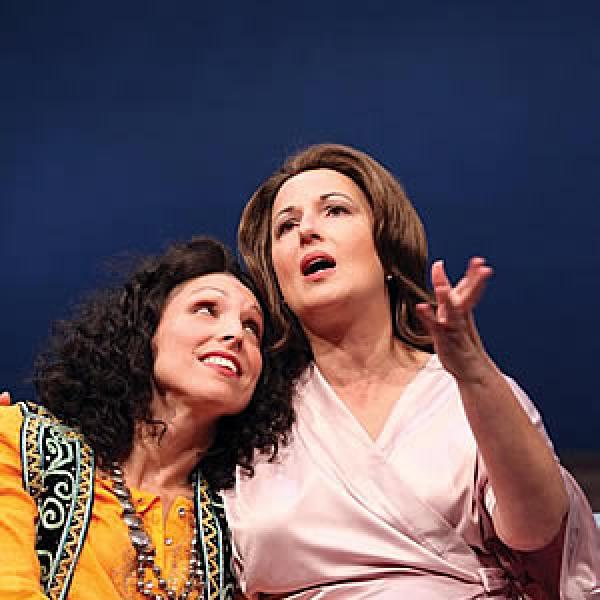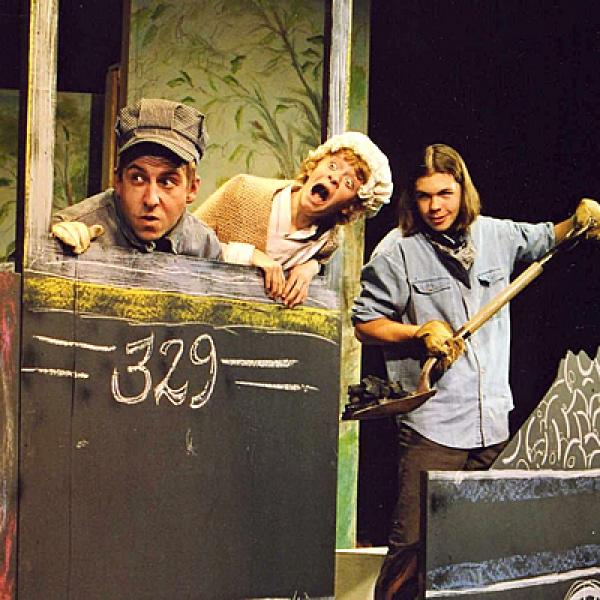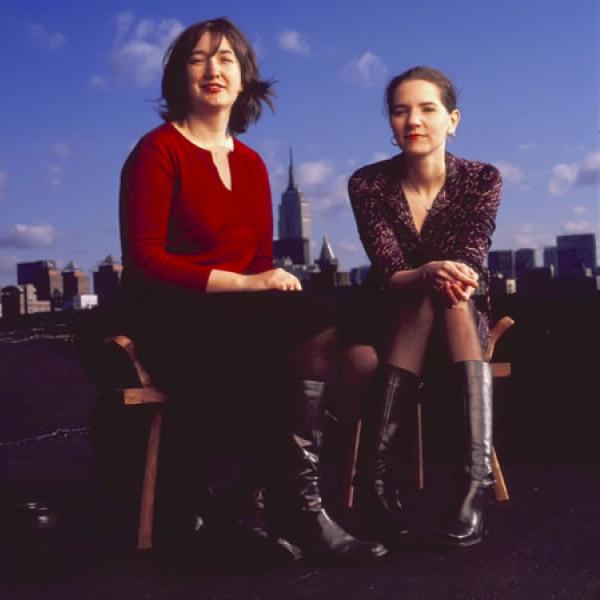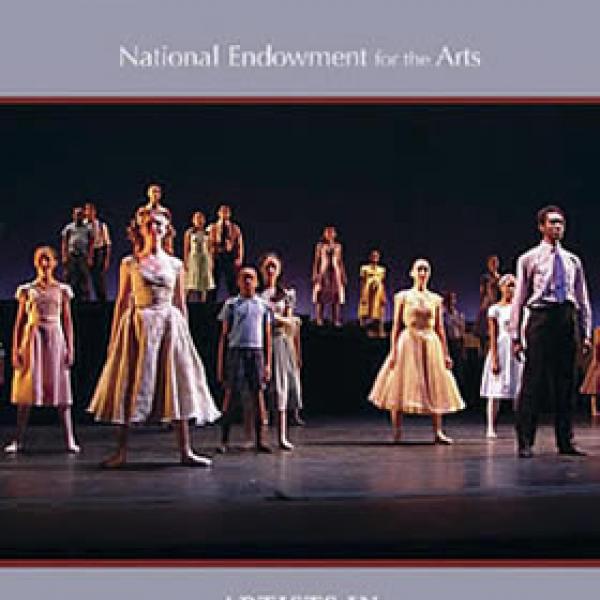Designs on the Future
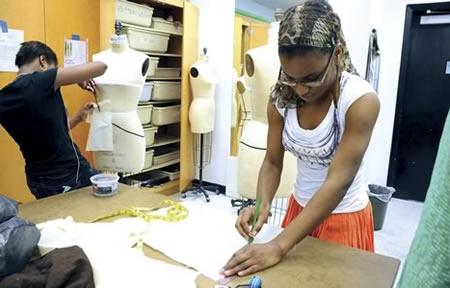
Blondine Jean, a student at Design and Architecture Senior High in Miami, Florida, working in her fashion design class.
In what looked like a scene from Project Runway, high school students in a fashion design class were constructing handbags from beaded, painted canvas. But this wasn’t just an academic exercise. The students’ creations were one-of-a-kind pieces to be sold by the global fashion company Fendi, enhancing the original design painted by Parisian graffiti artist André Saraiva.
“They will be quite a precious commodity,” observed Stacey Mancuso, principal of the Design and Architecture Senior High (DASH) in Miami, Florida. She could say the same of the students at DASH, which is ranked among the premier magnet schools in the country, and produces students who go on to success in both college and careers in design and the arts.
NEA Chairman Rocco Landesman visited DASH in early February as part of the NEA Art Works tour to see how cities are putting art at the center of their revitalization efforts. One of the areas he toured was the burgeoning Design District—where DASH is located—home to more than 130 art galleries, showrooms, and design services firms.
DASH’s focus on the arts, specifically design and architecture, attracts serious art-minded students. But if you think the students just sit around all day pondering art projects, think again. DASH students take eight courses a year as opposed to the six courses other Florida high schools require, and the school consistently achieves an “A school” rating in the state’s school accountability program. Nationally, DASH received a 2007 Blue Ribbon award from the U.S. Department of Education, and was ranked as the #2 magnet school in the country (and #15 of all high schools nationwide) in the third annual “Best High Schools” report by U.S. News & World Report. Not only that, but 99 percent of students enroll in college with many receiving scholarships from top art and design schools. So not only do DASH students work harder, they achieve more.
And make no mistake, making art is work, as senior fine arts student Keith Clougherty can tell you. His film classes, for example, have taught him just how much work is involved in making movies. “When you’re just watching a movie, it looks really like, ‘Oh, I could do that!’ But then when you think about the scripting and the casting and the filming, editing, lighting, sound—there’s just so much that goes into making a movie.”
The interdisciplinary nature of the curriculum ensures that the students get a well-rounded immersion in the arts. “There are so many different kinds of arts and artists,” said Clougherty. “Being exposed to artists and art at a high school level really prepares you for college and then also for life as an artist.”
Clougherty continued, “I’m always talking about my art, or other people’s art, and commenting on art. You learn what it is like to communicate and react and live in an artistic environment. Otherwise, I would not know anything about art, really. It’s been a huge help.”
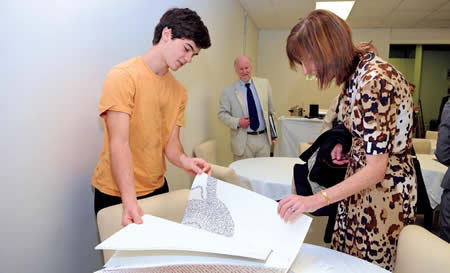
Keith Clougherty shows his artwork during NEA Chairman Rocco Landesman’s Art Works visit to DASH. |
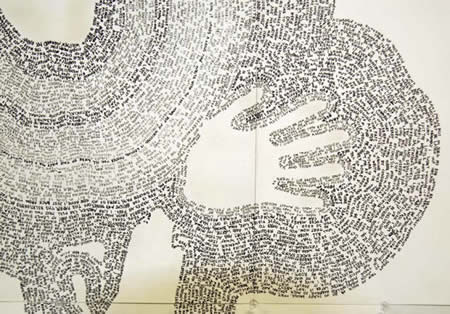
A detail from one of Keith Clougherty’s artworks.
|
Clearly being at DASH has helped Clougherty— he had the distinction of being selected as one of ten Visual Art finalists in the 2009 YoungArts program, a prestigious national competition sponsored by the National Foundation for Advancement in the Arts (NFAA). As the sole nominating agency for the Presidential Scholars in the Arts, YoungArts selects two of the ten finalists in Visual Arts to travel to Washington, DC, as Fine Art and Performance Presidential Scholars.
Added Clougherty, “Coming to DASH, and really being part of this art community, just in the middle of the Design District, you learn so much from not only the school and what’s happening around the school, but the other kids. It’s a magnet school, so it pulls kids you would never have met from all over the city.”
When asked what makes Miami the perfect location for a school like DASH, Mancuso said, “I’ve had 25 years of working in the school system to figure this out. What is it that makes Miami different? I think it is that incredible mix of cultures within this city that makes the visual art, the dance, the theater, the music so vital, so strong, so important. I think that we embrace our multicultural in here. I think we’re one city that really can say we’ve done a good job with that.” Mancuso noted that roughly 80 percent of the student body are of an immigrant background.
Rosie Gordon-Wallace, DASH advisory board member and director of the Diaspora Vibe Gallery, a local arts organization serving emerging artists from the Latin American and Caribbean Diaspora, agreed that the vibrancy of cultures is part of DASH’s success. “We don’t have to suppress our culture in order to become artistic. We can enhance a culture by what is out there.”
DASH senior Blondine Jean is an example of how the cultures merge. A first generation Haitian-American, she incorporates her traditions into her textile work. “I’m concentrating on my Haitian culture,” she said. “The idea of making something out of little to nothing.” Like Clougherty, she is working across disciplines to hone her ability. “We’re taught how to get past our boundaries and just go places where we won’t normally go.”
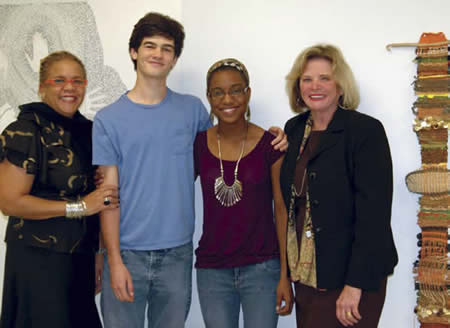
Rosie Gordon-Wallace, Keith Clougherty, Blondine Jean, and Stacey Mancuso.
|
As Jean has found out, to do that requires sacrifices perhaps other high-schoolers aren’t making. “We came here to learn and grow. If you want to, say, watch a show that you really like, you have to give that up in order to get projects done. Like painting, for example. I lost a lot of sleep learning how to paint.”
Though all the students who attend DASH have talent, what the school administrators are looking for is something more than that—the passion and drive to achieve. The rigorous audition process, which includes presenting a portfolio, drawing something right there at the audition, and a personal interview, helps to identify those students. “One of my favorite portfolios in my career here,” said Mancuso, “was one that was done on napkins, paper napkins, with a ballpoint pen. [It] was a young man who came with his stack of paper napkins. He had those because his father was a dishwasher in a restaurant. And he would go after school and wait for him to be finished, and draw the people in the restaurant. And that portfolio will remain with me forever. It was as worthy as the most refined pristine portfolio that has been presented.”
DASH also offers the students a chance to work with artists in a professional setting through an internship program. “Up to 100 professional mentors work with our students,” said Mancuso, “and our students work with them to gain that true professional experience that we cannot provide in the school site. And I think that gives them a special edge when they go off to college—they’ve actually worked in a professional arena.”
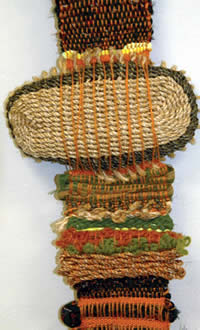
A detail from one of Blondine Jean’s artworks. |
As Gordon-Wallace pointed out, “DASH is about nurturing young people who are on a path to excellence.” And students like Jean want to share that excellence after they move on from DASH—she is considering postsecondary studies in both art school and occupational therapy. She said that she can “teach what I’ve learned here. I could just do anything now— there’s no limit on what I can do. I don’t think I would have felt the same way if I went to another school. I don’t think I would have been who I am now.”


